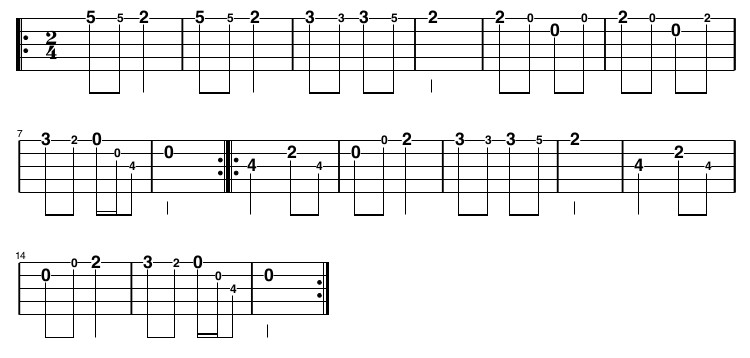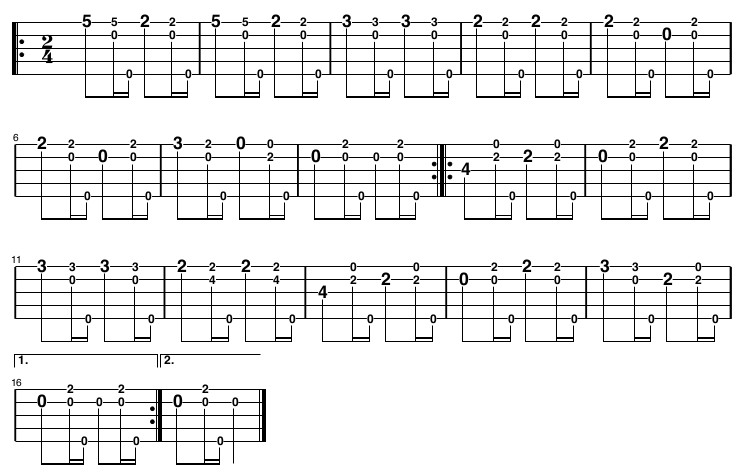Episode 8: Rock the Cradle, Joe
Have an infectious melody, of course.
And, in my opinion, Rock the Cradle, Joe is about as contagious as they come. So consider yourself warned, this one’s a bonafide earworm.
So, let’s get down to the business of learning it.
Rock the Cradle, Joe is played in the key of D, so get your banjo into “double D” (aDADE) tuning forthwith.
Step 1: Know Thy Melody
According to my sources, the version of this tune that inspired it’s inclusion into traditional old-time jammery was recorded by the Spangler brothers J.W. and Dudley in the 1940s. Thanks to the wonders of networked digital technology, we can hear this one played on the youtube:
Spangler brothers playing Rock the Cradle, Joe
Of course, it’s always nice to hear a few other renditions to help burn the core of this tune into our noodles. So, here’s a couple more fine examples courtesy of some outhanging fiddlers:
Step 2: Find the Melody Notes
So, in the fiddle examples above you can hear some subtle differences in the notes and phrasing, but you should be able to extract the essential features of the melody. Once you’ve got it in your head and can whistle or hum it out loud, it’s time to find it on your five string. Remember, we’re just trying to identify the unadorned melody here, sans banjoistic accoutrements.
Here’s the way I hear it:
And here’s how that looks in tablature:
Step 3: Clawhammerify It
Now let’s put this melody through the clawhammerizer to get it nice and bum dittified. To do so, we’ll take the melody notes that occur on the downbeat (the bolded notes in the tab above), which we’ll strike on the bum stroke with our frailing finger, and then follow each of those with a ditty strum.
Here’s what that looks like in tab:
And here’s what that sounds like:
Now we’ve got something with a little rhythm and a little melody, and perfectly suitable for accompanying a fiddle. Here’s what that the two sound like together:
Step 4: Embellish ad libitum
At this point, it’s up to you to take your arrangement where you want (if you want to). You can try to see if you can get as many of those notes you hear on the fiddle into your playing with some dropped thumbs or left hand pyrotechnics. Or simply try to throw in a little rhythmic variety with your picking hand.
Here’s one way I might play it:
And here’s that version in tab:
https://corerepertoire.s3-us-west-2.amazonaws.com/rock+full.jpg
And here’s how that one would sound against the fiddle:
As you can hear, this fuller type of arrangement turns this duet into more of a fiddle and banjo “conversation”, where the banjo is functioning as more of an equal partner to the fiddle (whereas in our initial version, it was serving as more of a rhythmic foundation). Either approach is perfectly fine, however.
Step 5: Practice Smart
Now it’s time to burn this one into your brain circuits. My favorite place to start doing so are the Beats for Banjo tracks (select tempo through the playlist icon on the upper right):
Gotta go to sleep,
Gotta get up,
Gotta go to work in the morning
Whatcha gonna do when the baby cries
Rock the Cradle, Joe
Whatcha gonna do when the baby cries
I don’t know
Whatcha gonna do when the baby cries
Rock the cradle, Joe
Go to the Core Repertoire Series Table of Contents